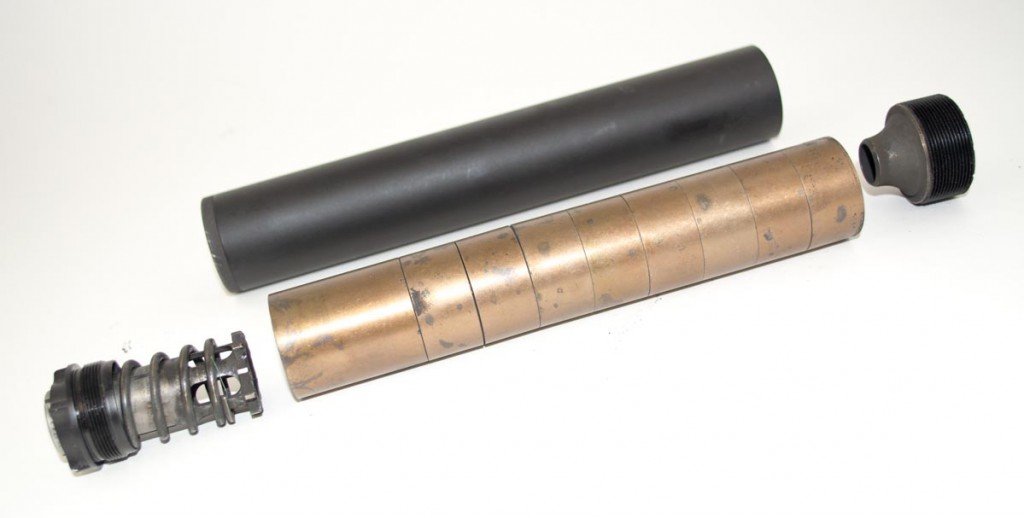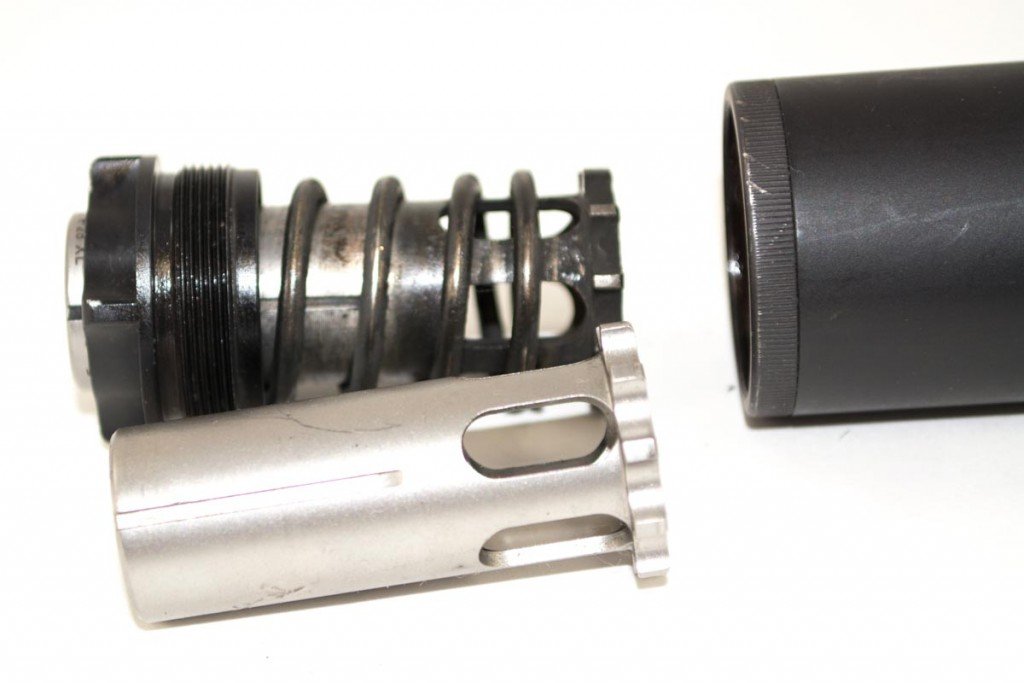
What makes a silencer like this SilencerCo Octane 45 tick? Read on to find out.
How do silencers work? Physics! Who said science can’t be fun?
Before we get into the GunsAmerica 2015 Science Fair, let’s clear something up about the name. Calling a gun muffler a “silencer” is correct. Calling a gun muffler a “suppressor” is also correct. Hiram Percy Maxim, son of the guy who invented that awesome machine gun, invented the silencer way back in 1902. When he patented it in 1909, he trademarked the device as a Maxim Silencer. So the original and proper name is “silencer.” Since then, the industry has made use of the descriptive term “suppressor” since silencers don’t really silence – they suppress. It’s like those machines that bored office workers use to duplicate their butt. You can call them Xerox machines or copiers. From here on out, I’ll use the two terms interchangeably.
What maketh noise?
There are several components of gunshot noise. The big one is the sound of hot gas blasting out the muzzle. Then, with a supersonic projectile, there’s a mini sonic boom that travels down range. The noise of the action of the gun can also come into play. Silencers primarily address the big one – the sound made by rapidly expanding gas as it’s expelled from the muzzle.
The big blasty noise is a result of releasing the Kraken. In this case, the Kraken is super hot, and super compressed gas trapped in the barrel until the bullet leaves. Most bullets are one or two-thousandths of an inch larger than the bore itself, so all that Kraken gas is entirely trapped behind the bullet until the micro-second it leaves the barrel. When the hot and highly compressed gas hits the relatively cool and not at all compressed air, chaos happens. The rapid cooling and decompression makes noise, a lot of noise. That’s the “blast” you hear when firing a gun.
How much noise is the gas blast? Even an unsuppressed .22LR pistol, at about 153 decibels, is louder than a jet taking off. A .45 ACP pistol shot can be over 160 decibels. Keep in mind that decibels are measured on a logarithmic scale, so just a three-decibel increase represents a doubling of sonic energy. Every decibel matters, so when silencer companies talk about lowering the noise of a shot by 20 or 30 decibels, that’s a really big deal.

Most suppressors can work on smaller caliber guns with similar pressures. Here, the pistons are interchangeable for different handgun calibers.
What maketh less noise?
Since the most abusive noise is caused by the muzzle blast of expanding and cooling gas, that’s where suppressors work.
Just a like a car muffler, a suppressor keeps the hot compressed gasses contained until they have the opportunity to cool and expand a bit. The idea is that if you can lower both the temperature and pressure before letting those gasses interact with the atmosphere, the energy, and associated noise will be reduced. The closer you can get the muzzle gasses to the ambient atmospheric conditions before they exit, the lower the noise signature.
The best way to illustrate the sonic power of pressure differential is to fill up two balloons. Pop the first one with a pin. If it’s really full, it will make a loud noise and frighten the dog. The noise is certainly not caused by the pin. It’s caused by the rapid expansion of the pressurized air inside the balloon when the balloon’s barrier is suddenly broken. Take the second balloon, and allow the end to open, gradually letting the air out. There’s just a small hiss and no big noise. That’s because the interior pressure and exterior lack of pressure reach equilibrium gradually. Without a sudden release of pressure, there’s no bang.







The explanations are great, the “Kracken” and “blasty” not needed,,, (or “not so much”)
JMHO…